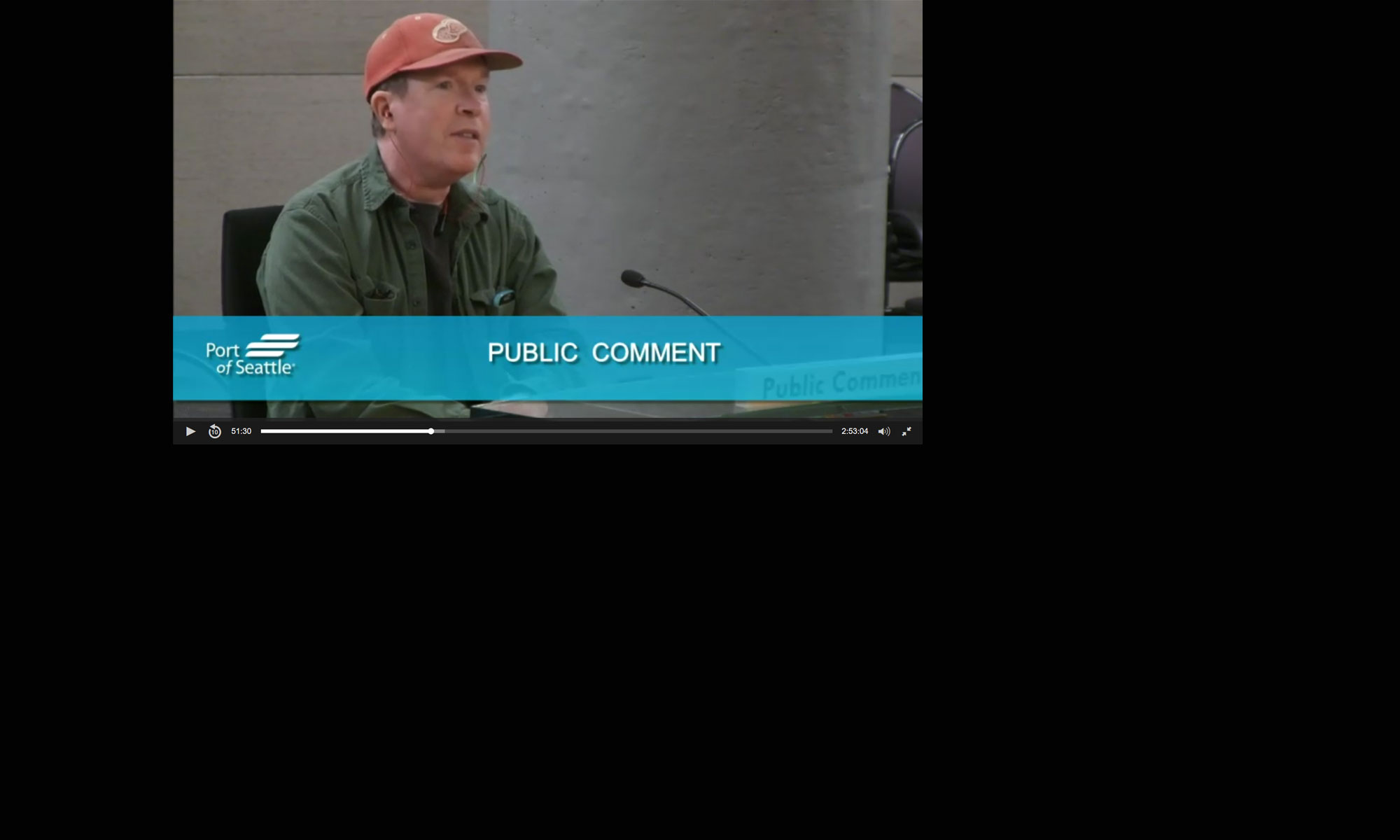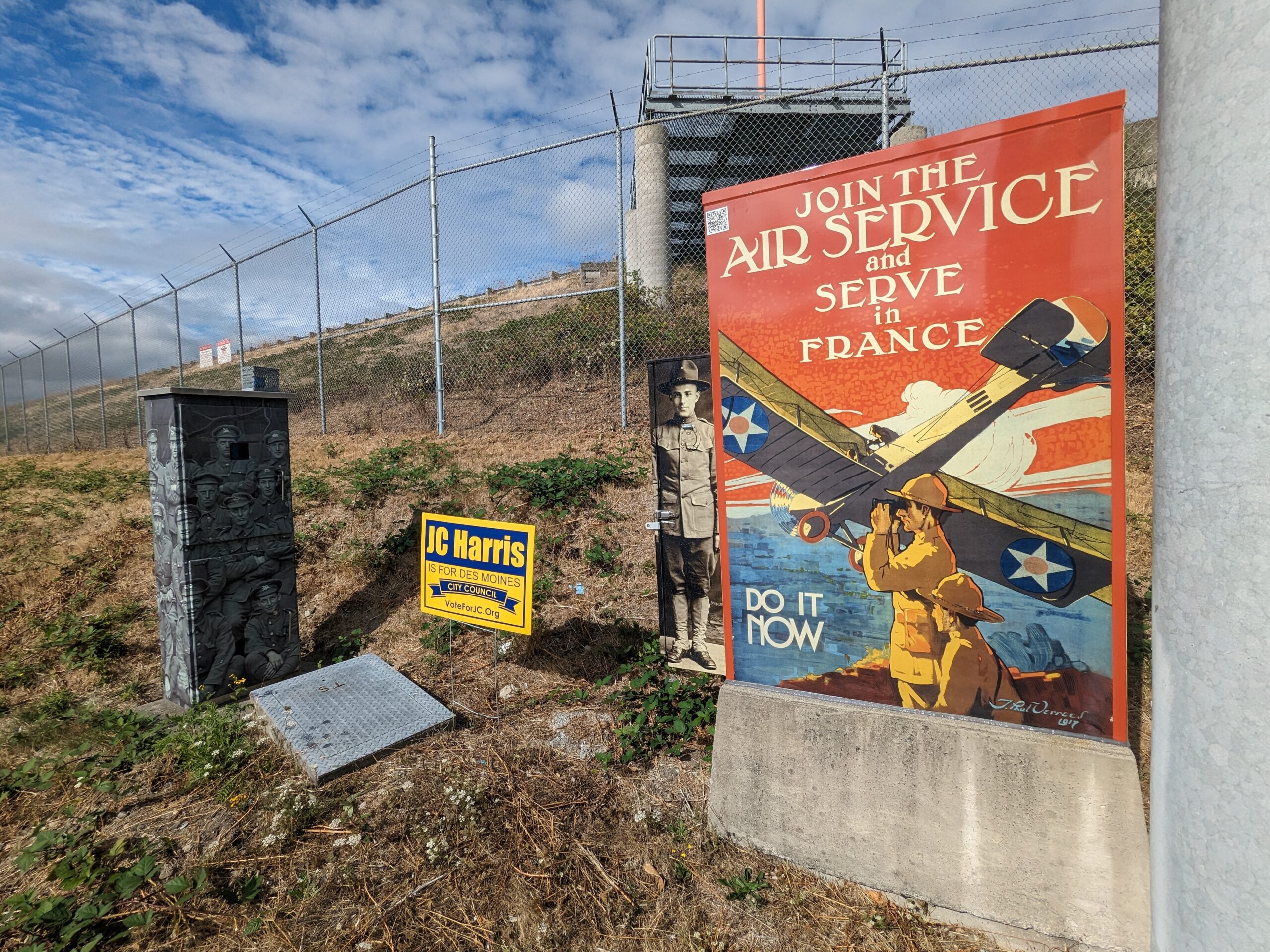-

Non-partisan. Independent.
Next City Council Meeting is June 5, 2025
-

Working hard to support local businesses!
-
An advocate for airport issues!


JC Harris For Des Moines, Washington
City Council, Position #2
Thank you for covering this testimony. Please be assured based our testimony and evidence on the SEPA law which, given the evidence we highlight below, indicates that a full Environmental Impact Statement (EIS) should be required for this project to move forward. This is because after reviewing the SEPA checklist and the application documents, the applicant made limited efforts to acknowledge let alone measure the degree to which the community currently derives value from accessing the city’s signed natural trail. The applicant’s failure to collect basic information about the land and the value that its tree-covered trails currently provide members of the community leads to the conclusion that the MDNS has not been sufficiently prepared. SEPA law demands authentic efforts to collect and analyze relevant data to allow appropriate environmental consideration in the city’s decision making alongside its economic and technical considerations.
These omissions are even more glaring considering Des Moines Creek Park’s status, as a significant park by city code and that a major portion of the mitigation plans are to redevelop and restore roughly a third of the property as a park for which no community input was specifically gathered. SEPA demands that governmental decision makers be fully informed and educated about the potential impacts of their decision before those decisions are made, a full EIS that considers the recreational value to the community, would remedy this. RCW 43.21C.030(2)(b).
The SEPA rules provide legal standards for determining whether a project has probable significant adverse environmental impacts and, “in determining an impact’s significance (WAC 197-11-794), the responsible official (in this case the city) shall take into account the following, that, (a) The same proposal may have a significant adverse impact in one location but not in another;” In our appeal, particular attention was paid to a project’s location. Here are ways decision makers would benefit from having the data an EIS would provide.
How SEPA rules define the term “significant” is imperative when determining whether an EIS is needed. Under WAC 197-11-794, “significant” means “a reasonable likelihood of more than a moderate adverse impact on environmental quality.” Significance involves both context and intensity and is not just a formula to apply or test to run.
WAC 197-11-330 specifies the factors for determining whether a proposal is likely to have a significant adverse environmental impact. That section makes it clear that, among other things, a development’s location matters. As such, the SEPA rule WAC 197-11-330(3)(b) recognizes that the “same proposal may have a significant adverse impact in one location but not in another location.” This aspect of SEPA regulations must be considered in making the threshold determination for this project where its relative location raises environmental concerns in relation to the adjacent properties and including airspace and the aquifer—there will be an impact on eight location factors in all.
1) Port of Seattle Flight Path: The location is underneath the SeaTac flight path with potentially harmful noise and air quality issues that went unrecognized in the current MDNS. Current air quality and noise levels were not measured, and no calculations conducted as to the impact on recreation users by the replacement of the trees with impervious surfaces on the west and wetlands on the east. When “information on significant adverse impacts essential to a reasoned choice among alternatives is not known, the costs of obtaining it are not exorbitant, agencies should obtain and include the information in their environmental documents.” WAC 197-11-080 (1). Moreover, impacts from Port of Seattle plans to increase domestic, international and cargo flights substantially is underway and documented in the Sustainable Airport Master Plan [Environmental Check list letters #]. An EIS could help the city understand noise and air quality issues and use that data in the park redesign and trail mitigation plans.
2) Adjacent Residential Neighborhoods: This former neighborhood was rezoned from residential to business park, removing what had been a natural environmental buffer between the business parks to the east of the site and the adjacent single-family homes to the west and nearby multi-family homes to the south. Current air quality and noise levels were not measured, and no calculations were conducted on the impact of replacing 500 trees with impervious surfaces on area residents. An EIS is highly beneficial to planning for the air and noise impacts of this development on the lives and the health of the families adjacent and near the west property line, in particular.
3) WA Priority Habitats and Species: As the regional trail system expands through southeastern King County and beyond, an EIS of this property would provide useful information for supporting a key local animal movement corridor and the restoration efforts that are underway, helping the city better address Washington State Urban Development Priority Habitats and Species goals and support the designs through the site for human trail use as well.
4) KC Erosion and Landslide Hazards Area: Located off the property to the north is a ravine carved by Des Moines Creek. Along this ravine is a King County Erosion and Landslide hazards area. We did not a locate cartographic map of the midline of the creek and other lines along the embankment which are a requirement to understanding the water system and designing mitigation. While a complete Geotechnical report was produced, limited information was provided about the topography to the north of the building foundation. An EIS would help supply important information about erosion and the potential impact of clearcutting and removing all the vegetation above the undercut bank approximately 40 feet north of the property lines,
5) DMC BP Stormwater Management: Adjacent and off to the northeast corner of the property is wetland and stormwater mitigation from a previous phase of the development. The city owns this stormwater mitigation site, and the developer owns the stormwater mitigation site off of the southeast side of the property. An EIS was completed for the phase- in development of approximately 1 million square feet on 87 acres. I made an effort to acquire the mapping and mitigation plans from the 2006-2007 timeframe (Final EIS 200701696) but they are not available electronically. The fact remains that an EIS was completed on earlier phases of this work and that strongly indicates that the city needed the information that only an EIS could provide for essentially the exact type of project in adjoining or almost adjoining parcels of land. Fast forward to today, and we are dealing with even more significant impacts than when the Port of Seattle and the City had to make a determination on back then. There are multiple issues raised based on the project’s location that I have been describing here. There is an environmental function of the trees due to the improved health outcomes for those living next to the property due to their proximity to the flight paths, and for their recreation value due to the land’s current function as a park. With an EIS the city will have missing critical information to achieve a mitigated solution
Moreover, three experts in their fields each expressed professional concerns that the city either failed to gather the necessary data to make an informed decision, failed to use the data that was gathered to make the decision, and/or errored in their decision in issuing an MDNS at this point in time because the mitigations, as they currently are designed, do not yet produce a net loss of environmental function. Each of them, in their professional capacities, have communicated that more study is necessary to ensure the mitigation replaces the loss of function. Conducting an EIS would help the city gather data to address the input from these stakeholders which is the primary function of an EIS.
6) Wellhead Protection Area: While addressed in the applicant’s geotechnical report, an EIS would provide actual data on the specific impacts to the site’s delineated Wellhead Protection area in terms of calculating changes to the recharge of the aquifer and data on the impact to the water quality. This is data is particularly significant because the developer has made it clear that the site will be available for as yet unknown light industrial uses. An EIS could help the design limits or parameters around allowable tenants given the development’s location above the Wellhead Protection area.
7) DM Creek-Salmon Bearing Stream. An EIS could support the extensive work that the Department of Ecology will undertake as they rebuild the ecological function of the site: once all the vegetation has been scraped away, the ravine filled, the Ns stream rerouted in different directions, the land recontoured, the wetlands and surrounding buffers put back in place, the new ground cover and saplings replanted all in relation to the stormwater system operating directly above the ravine of a class F salmon-bearing stream.
8) Barnes Creek Connector Trail: Des Moines Creek Trail signage on the applicant’s property marks trails that run through this property to a designated significant park. At the same time, underway to the south is construction on Barnes Creek Trail. This property is a key connector trail between both.
Under the current trail mitigation plan, the designers have created a paved trail on the east side of the property that must be built on an elevated structure above the buffered, fenced remaining wetlands. If there is no additional design work done, then that paved three block trail will relink to a dirt city-owned trail at the top of the erosion and landslide hazard zone just north of the property. That trail currently traverses a steep area down the ravine and across a bridge to a paved trail along the creek. To the south is the Barnes Creek Connector Trail, currently comprised of dirt and woodchips. An EIS could help create an authentic trail plan rather than an expensive trail, laid above sensitive wetlands and buffers that leads around the warehouse and parking lot which for anyone on wheels, will lead to nowhere.
Additional Impacts to consider:
1) Multiple Unknowns: SEPA rules indicate that Impacts that are difficult to gauge are the hallmark of impacts that should be analyzed in-depth in an EIS. A project that has “unique and unknown risks to the environment” is a project that should be analyzed in an EIS. WAC 197-11-330(3)(e)(iv). Conflicts with local, state, or federal laws or requirements for the protection of the environment are evidence of significant impacts. Projects that may affect public health or safety should be analyzed in an EIS.
2) Cumulative Impacts: Impacts may be direct, indirect or cumulative. WAC 197-11-792(2)(c). Cumulative impacts require the city to consider the impacts of this proposal together with the impacts of other nearby developments (existing or planned) that will create additive or synergistic adverse impacts on environmental resources. Existing impacts are the opening of the Highway 509 exit onto 24th Ave S with the concurrent semi-truck traffic that will bring, and new traffic exiting into the area, the completion of the Hwy 509 extension that will pass by approximately 12 blocks to the north, and the expansion of the air traffic as the Port of Seattle builds 30 near airport projects.
IN CONCLUSION
There is one factor that is irrelevant to the threshold determination process and that is the alleged utility of the project from the applicant’s perspective (or from anyone else’s perspective, e.g., local businesses). “A threshold determination shall not balance whether the beneficial aspects of a proposal outweigh its adverse impacts, but rather shall consider whether a proposal has any probable significant adverse impacts under the rules stated in this section. For example, a proposal is designed to improve the environment, such as sewage treatment plants or pollution control requirements, may also have significant adverse environmental impacts.” WAC 197-11-330(5). Thus, evidence introduced by the applicant regarding the benefits of the proposal is wholly irrelevant to the SEPA review.
In sum, if after following WAC 197-11-080 and 197-11-335 the lead agency reasonably believes that a proposal may have a significant adverse impact, an EIS is required. Evidence has shown that the impacts here are significant and that an EIS should be required.